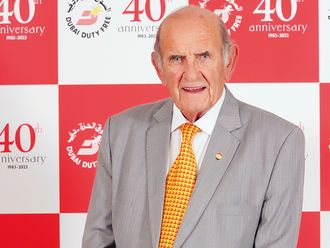Following on from Cityscape Abu Dhabi, which got over on Thursday, I have focused this month’s column on what’s going on in real estate in the capital.
In our keynote presentation at the show we analysed Abu Dhabi’s progress against the 2030 vision and the supply-demand dynamics for each real estate sector. While Abu Dhabi is making very sound progress against the objectives of the broader 2030 Vision, we highlighted a few areas that require further progress.
Overall, market conditions remained relatively stable in Q1. While a reduction in government spending linked to the decline in oil prices slowed the pace of demand growth in the short-term, it is still continuing, supply is relatively contained and market conditions are generally positive.
So here’s a quick look at what is going on in each sector…..
Residential rental market
End-user demand has been strong, driven by new job creation as the government invests in major projects such as airport expansion, new health care and education projects, and the development of free zones. In addition, changes to policies such as the requirement for government employees to live in Abu Dhabi rather than commute from Dubai, and the Tawtheeq regulations requiring registration of tenancies, have further induced demand.
Quality supply remains limited, which led to strong growth in prime residential rents over the last two years — 17 per cent during 2013 and 11 per cent during 2014. A further contributing factor was the removal of the rent cap, which previously restricted rises to 5 per cent per annum.
We expect there to be a reduction in government spending this year which will slow down the annual demand growth rate. Given the current shortage of quality housing, we expect rental growth to continue, but at single-digit rates.
Residential sales market
While the residential rental market was recording mid-teen percentage growth, the prime residential sales market was racing away at 25 per cent annual growth. This pace is not sustainable, and we have seen residential sale rates remain stable since Q4-14 — largely due to a softening of investor sentiment since the decline in oil prices and equity markets.
Provided current market conditions prevail, we do not anticipate much of a decline in prime residential prices due to the relative shortage of available quality product.
Office market
Abu Dhabi’s office market continues to recover. Prime office rents stabilised from mid-2012 to mid-2014, and then increased 10 per cent in the second-half of 2014 as occupiers moved to upgrade their space and vacancy rates reduced.
Future office supply completions remain much lower than previous levels, with a high proportion of new supply being owner-occupied or pre-committed. While we expect demand in oil-related and some government sectors to reduce due to the decline in oil prices, given that supply pipeline is contained we expect the market to remain stable.
Future growth is much dependent on government economic development initiatives to grow new demand and increase private sector activity.
Retail market
There remains a limited supply of high quality malls relative to the spending power of the population, with the opening of Yas Mall during Q4-14 being a welcome addition for resident and tourist shoppers. Average rents and vacancy rates have remained stable for some time now.
The outlook is highly positive as shopping demand continues to increase from population, employment and tourism growth. There are a number of super-regional malls in the pipeline which will cause the market to become more competitive and downgrade lower grade malls. On the other hand, there remains a major shortage of neighbourhood and convenience retail.
Hospitality market
The standout sector for Q1-15 was hospitality with a slight increase in occupancy rates and a 12 per cent increase in room rates — the first time operators have been able to increase room rates since 2010.
In recent years, there has been a steady increase in tourism arrivals, due to a range of ongoing government initiatives to grow tourism demand — including the expansion of Etihad Airways and the airport, further enhancement of Abu Dhabi’s leisure offering, and campaigns by the Abu Dhabi Tourism & Culture Authority regionally and globally.
Unfortunately, the positive increase in demand has largely been offset by new supply coming through, impacting on trading performance.
The pace of additions is now slowing down, yet tourism growth continues. Occupancy rates have been pushing steadily upwards over recent years (now reaching 77 per cent) and we are now seeing operators being able to increase room rates. Further growth is expected from 2018 onwards as a number of projects come to fruition — including the airport expansion, further expansion of Etihad airline and the opening of major new visitor attractions.
The writer is the CEO of JLL MENA.












